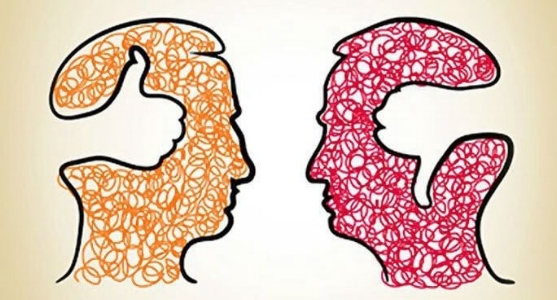Addressing my unconscious bias
I recently took a few online implicit association tests (IATs). These tests were originally developed by researchers at Harvard to explore the roots of unconscious thinking, and were later offered to the public so that individuals can gain more awareness of their unconscious preferences and beliefs. There is an IAT for race, sexuality, weight, age, gender in science, and more. I heard about IATs a few times in the past and was recently prompted to take one when I saw someone post their results.
At first, I imagined the test would be some sort of questionnaire, and I felt skeptical that any questionnaire could legitimately reveal something to me about my unconscious. As it turned out, IATs are much more clever than that.
Generally, you are required to place words and images into one of two categories using one of two keyboard keys. The unconscious part is that you are required to do this as quickly as you can, i.e., “without thinking.” There are several warm-up rounds to get your mind in a place where you can do this. Your response times and performance are compared for placing words and images into different category combinations. For example, bad and white and good and black, versus bad and black and good and white. Depending on your relative performance, your results will reveal whether you have a strong, moderate, slight, or no automatic preference for one group over another.
Simple enough, right?
Well, I’m sorry to say that I’m not going to reveal my IAT results here. They are very personal and this blog is very public. However, I will tell you my insights based on the results.
The two tests that revealed I had little to no automatic preference for one group over another, were regarding the types of discrimination of which I am most conscious, and which I most actively advocate against. In these two cases I have family or very close friends who have experienced discrimination of these types.
The two tests where I had a strong automatic preference for one group over another, were regarding types of discrimination that I do not consciously think about or actively advocate against. And in these cases I do not have someone very close to me who fit the profile of the discriminated groups.
What did I learn form all this?
Being and remaining conscious of all types of discrimination is a good start to addressing unconscious bias. Reading and hearing stories of discrimination from all types of people, and actively advocating against these forms of discrimination is an even better method. However, I think the absolute best way to avoid automatic preferences over a particular group is to make and maintain a friendship with someone within that group. The knowledge that discrimination is affecting someone close to you may be the most powerful influence against your unconscious bias.
So I’m off to make some new friends.
